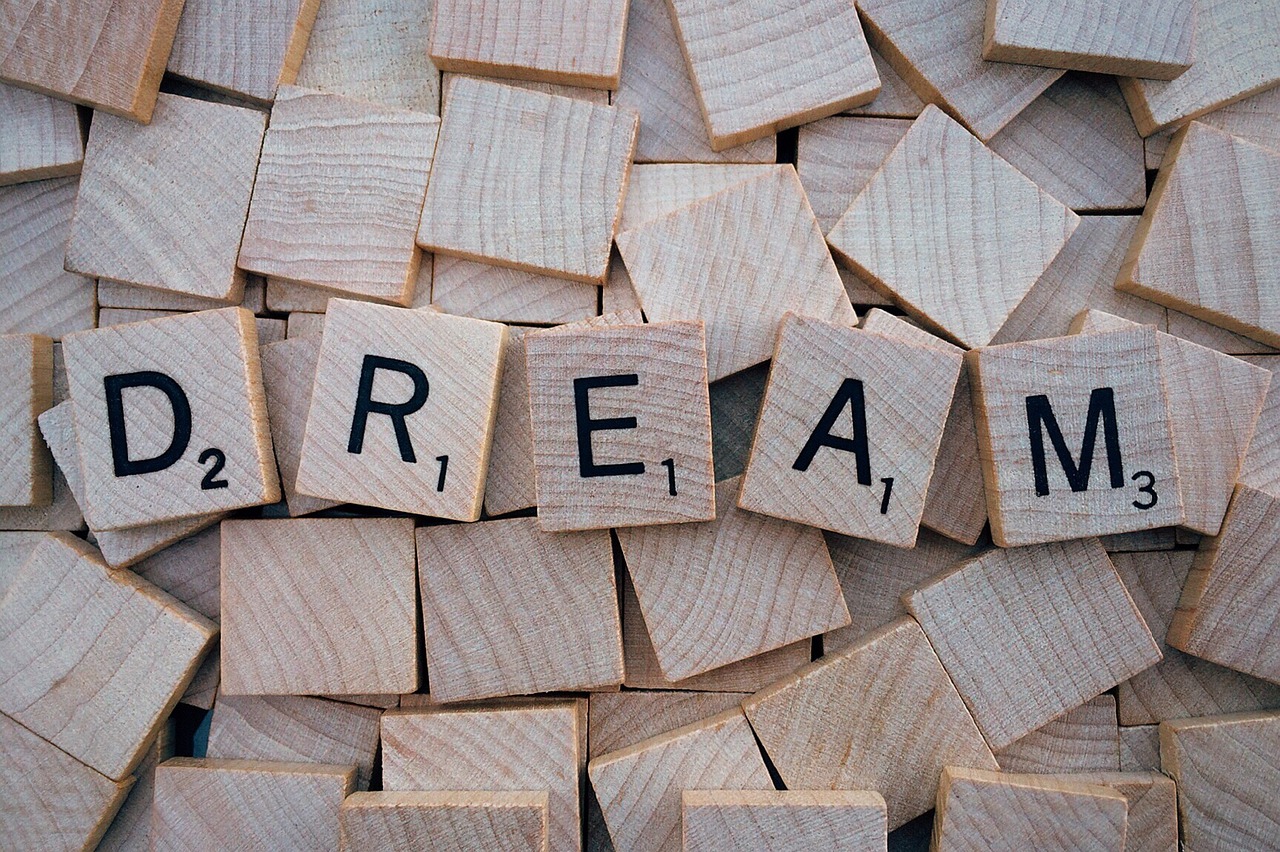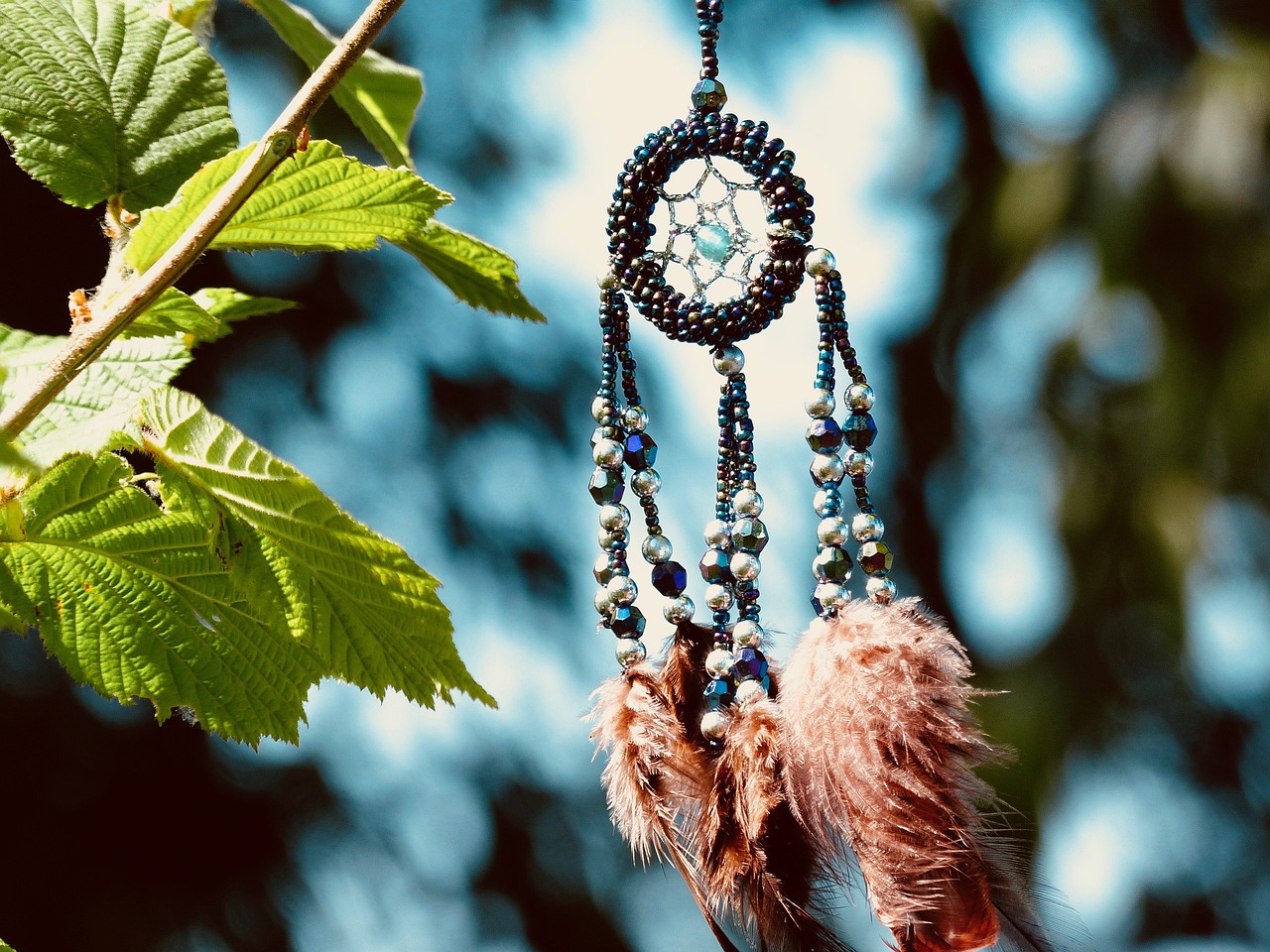How to Make DIY Dream Catchers for Your Bedroom
Dream catchers are not just beautiful decorations; they are steeped in rich tradition and symbolism. Making your own DIY dream catcher can be an incredibly fulfilling project that adds a personal touch to your bedroom decor. Imagine creating a stunning piece that not only enhances your space but also serves as a protective talisman, catching bad dreams while allowing good dreams to pass through. This article will guide you through the creative process of making dream catchers, from selecting the right materials to incorporating your unique style. So, grab your crafting supplies, and let’s get started!
When it comes to crafting a dream catcher, the first step is choosing the right materials. The beauty of a dream catcher lies in its components, which can vary widely based on your personal taste and the story you want to tell. You’ll need a hoop to serve as the base, which can be made from various materials such as willow, metal, or even sturdy plastic. Each type of hoop brings its own character to your creation. For threads, you can opt for natural fibers like cotton or go for colorful yarns that pop against the backdrop of your bedroom. Don’t forget the embellishments! Feathers, beads, and charms can add a touch of whimsy and meaning to your dream catcher.
Once you have your materials ready, it’s time to dive into basic weaving techniques. Weaving is the heart of dream catcher making, and understanding the fundamentals will set you up for success. The most common pattern is the web-like design in the center, which symbolizes the filtering of dreams. You can experiment with different patterns to create a unique look. For beginners, starting with a simple circular weave is a great way to get your hands familiar with the process. The key is to keep your tension consistent as you work, ensuring that your threads don’t sag or become too tight.
Knotting is a foundational skill in dream catcher making. It’s essential for securing your threads and ensuring that your design holds together. Two simple knots can make a world of difference in your project. The first is the double knot, which provides extra security and stability to your weaving. To execute this knot, simply loop the thread around the hoop and tie it in a double knot, pulling it tight to secure your work. The second is the loop knot, which not only secures your threads but also adds a decorative flair. This knot creates a small loop that can be left as is or embellished with beads or feathers for an extra touch of style.
The double knot technique is a must-know for anyone serious about dream catcher crafting. It’s not only practical but also enhances the overall durability of your piece. To perform this knot, take your thread and create a loop around the hoop, then pass the end through the loop and pull tight. Repeat this process once more to create a double knot. This technique is especially useful when you’re working with heavier materials or when you want to ensure that your dream catcher can withstand the test of time.
The loop knot technique adds a decorative element to your dream catcher. It’s a simple yet effective way to introduce some personality into your design. To create a loop knot, wrap your thread around the hoop and pull it through to form a loop. Then, secure it by tying a knot. This technique not only secures your threads but also creates a beautiful visual element that can be enhanced further with beads or charms. Feel free to play around with the sizes of your loops to create an eye-catching design.
Once you’ve mastered the basics, it’s time to elevate your dream catcher with advanced weaving patterns. This is where your creativity can truly shine! You can explore intricate designs that reflect your personal style or even tell a story. Patterns like the starburst or spiral can add depth and interest to your piece. Don’t hesitate to mix and match techniques, combining simple and complex patterns to create something uniquely yours. Remember, the beauty of art lies in its imperfections, so embrace the process and enjoy the journey of crafting!
Personalizing your dream catcher is what truly makes it a reflection of you. This is your chance to infuse your personality and intentions into your creation. Start with color selection; different colors hold various meanings, and choosing the right ones can enhance the symbolism of your dream catcher. For example, blue is often associated with tranquility, while red symbolizes strength and passion. Consider what resonates with you and what you want your dream catcher to represent.
Color selection can profoundly influence the symbolism of your dream catcher. Here’s a quick guide to some common colors and their meanings:
| Color | Meaning |
|---|---|
| Red | Strength and passion |
| Blue | Tranquility and calmness |
| Green | Growth and harmony |
| Yellow | Joy and optimism |
Adding charms and feathers can enhance the visual appeal of your dream catcher. These elements not only beautify your piece but also carry significant meanings in dream catcher lore. For instance, feathers are often seen as a connection to the spirit world, representing freedom and flight. You can incorporate charms that resonate with your personal journey, such as symbols of love, protection, or adventure. The possibilities are endless, and choosing items that speak to you will make your dream catcher even more special.
Q: How long does it take to make a dream catcher?
A: The time it takes to make a dream catcher can vary depending on your skill level and the complexity of your design. A simple dream catcher can take a couple of hours, while more intricate designs may take several hours to complete.
Q: Can I use synthetic materials?
A: Yes, you can use synthetic materials, but natural fibers are often preferred for their aesthetic and traditional appeal. It ultimately depends on your personal preference.
Q: How do I hang my dream catcher?
A: You can hang your dream catcher using a simple loop of thread at the top, or you can use a decorative ribbon for a more stylish look. Just make sure it’s hung in a place where it can catch the light and be admired!

Choosing the Right Materials
When it comes to crafting a dream catcher, is absolutely crucial. Think of it as laying the foundation for a beautiful house; if the base isn’t solid, the entire structure can crumble. So, what do you need to get started? First off, you'll want to select a hoop that resonates with you. Hoops can be made from various materials like wood, metal, or even vines. Each type brings its own flavor to your dream catcher, so consider your personal style and the vibe you want to create in your bedroom.
Next up is the thread or string. The type of thread you choose can significantly impact the overall look and feel of your dream catcher. You might opt for cotton thread for a rustic charm, or perhaps nylon for a more modern look. The color of the thread is also important; it can either blend in or stand out, depending on your design vision. Additionally, think about the embellishments that will make your dream catcher truly yours. Feathers, beads, and charms can all add character and depth to your creation.
Here’s a quick breakdown of some materials you might consider:
| Material | Characteristics |
|---|---|
| Wooden Hoops | Natural look, sturdy, great for a rustic style |
| Metal Hoops | Modern appearance, durable, can be painted for customization |
| Cotton Thread | Soft, easy to work with, available in various colors |
| Nylon Thread | Strong, less prone to fraying, ideal for intricate designs |
Don’t forget to consider the size of your dream catcher. A larger hoop can make a bold statement, while a smaller one can be a subtle accent piece. It’s all about what fits your space and your aesthetic. And remember, the materials you choose should not only reflect your personal style but also serve the purpose of creating a peaceful and enchanting atmosphere in your bedroom. So, take your time to select each component carefully, as they will come together to create a dream catcher that is not just beautiful but also meaningful to you.

Basic Weaving Techniques
When it comes to crafting your own dream catcher, understanding is essential. These techniques not only form the foundation of your dream catcher but also allow you to express your creativity in unique ways. Imagine weaving a tapestry of dreams, where each thread tells a story and every knot holds a secret. With just a few techniques under your belt, you can transform simple materials into a stunning piece of art that enhances your bedroom decor.
One of the first things you’ll want to familiarize yourself with is the art of knotting. Knotting is the backbone of any weaving project, and in dream catcher making, it serves both functional and decorative purposes. Let’s dive into a couple of simple yet effective knotting methods that will help you secure your threads and give your dream catcher a sturdy structure.
The beauty of knotting lies in its simplicity. Even if you’re a beginner, mastering a few basic knots can significantly elevate your crafting game. Here are two foundational knots that you’ll frequently use:
- Double Knot: This technique is great for ensuring that your threads stay put. It’s like the safety belt of your dream catcher, offering that extra layer of security.
- Loop Knot: Not only does this knot secure your threads, but it also adds a decorative flair to your design. Think of it as the cherry on top of your dream catcher sundae!
The double knot technique is incredibly straightforward and effective. Start by taking two ends of the thread you’re working with and crossing them over each other. Then, loop one end around the other and pull it through the hole you’ve created. Repeat this process to form a second knot. This method not only keeps your threads tight but also ensures that your dream catcher can withstand the test of time. Just like a good friendship, it’s all about having a strong foundation!
Now, let’s talk about the loop knot technique. This method adds a touch of elegance to your dream catcher. To create a loop knot, begin with a simple knot as your base. Then, create a loop with the thread and pull the working end through the loop you’ve just formed. This technique not only secures your threads but also creates a beautiful decorative element that enhances the overall aesthetic of your dream catcher. Imagine how stunning your creation will look with these lovely loops adorning it!
Once you’ve got the basics down, you might feel ready to explore more advanced weaving patterns. This is where the real magic happens! Advanced techniques can add depth and complexity to your dream catcher, allowing for intricate designs that reflect your personal style. You can experiment with different patterns, such as the spiral weave or the web weave, to create a truly unique piece. Just remember, the sky's the limit when it comes to creativity!
In conclusion, mastering basic weaving techniques is the first step toward creating a beautiful and meaningful dream catcher. With a little practice, you’ll be able to weave your dreams into reality, one knot at a time. So, grab your materials, channel your inner artist, and let the weaving begin!
Q: What materials do I need to start making a dream catcher?
A: You’ll need a hoop (wooden or metal), thread or string, beads, feathers, and any embellishments you desire.
Q: How long does it take to make a dream catcher?
A: The time can vary depending on your design complexity, but generally, it takes about 2-4 hours to complete one.
Q: Can I customize my dream catcher?
A: Absolutely! Personalizing your dream catcher with colors, charms, and feathers makes it uniquely yours.

Simple Knotting Methods
Knotting is one of the most essential skills you’ll need when crafting your dream catcher. Think of it as the backbone of your creation; without strong knots, your dream catcher can unravel faster than a bad dream! Not only do knots provide security, but they also add character to your design. So, let’s dive into some simple knotting methods that will set you up for success in your DIY journey.
One of the simplest and most effective knots you can use is the overhand knot. This knot is great for securing your threads at the beginning and end of your weaving process. To tie an overhand knot, follow these steps:
- Take the end of your thread and form a loop.
- Pass the end of the thread through the loop.
- Pull tight to secure the knot.
It’s as easy as that! This knot is a fundamental building block, and mastering it will give you the confidence to tackle more complex techniques.
Another handy knot is the square knot, which is perfect for joining two pieces of thread together. This knot not only holds well but also lies flat, making it ideal for weaving. To tie a square knot, you’ll want to:
- Cross the right thread over the left and pull it through.
- Now, cross the left thread over the right and pull it through again.
Voila! You’ve created a square knot that’s strong and effective. It’s like the sturdy foundation of a house; without it, everything else could come crashing down.
For those who want to add a bit more flair to their dream catcher, the loop knot is a fantastic option. This knot not only secures your threads but also creates a decorative element that enhances your design. To execute a loop knot:
- Make a loop with your thread, leaving a long tail.
- Wrap the tail around the standing part of the thread a few times (usually 3-4).
- Pass the tail back through the loop and pull tight.
This knot adds a unique touch and can be used to attach feathers or charms to your dream catcher, making it even more personalized!
As you become more comfortable with these simple knotting methods, you’ll find yourself experimenting with different styles and techniques. Each knot you master will not only improve the structural integrity of your dream catcher but also allow you to express your creativity. Remember, the knots are not just functional; they are a part of the artwork you’re creating!
Q: What materials do I need for knotting?
A: You’ll need thread or string, scissors, and a hoop to get started. Optional materials include beads or feathers for decoration.
Q: How do I know if my knots are secure?
A: A good rule of thumb is to give your knots a gentle tug. If they hold firm and don’t slip, you’re good to go!
Q: Can I use different types of threads?
A: Absolutely! You can experiment with various types of threads, such as cotton, nylon, or even colorful embroidery floss, to create different textures and looks.

Double Knot Technique
The is a fundamental skill that every dream catcher maker should master. Why, you ask? Because it not only secures your threads but also enhances the overall durability of your creation. Imagine your dream catcher swaying gently in the breeze, each knot holding strong, ensuring that your beautiful piece remains intact for years to come. This technique is like the backbone of your design, providing the necessary support for all those intricate patterns and embellishments you’ll add later.
To execute the double knot effectively, start by taking two strands of thread that you intend to tie together. Hold them parallel to each other, and then make a simple knot by crossing one strand over the other. Pull it tight, but don’t stop there! For that extra security, loop the end of the first strand around the second one again and pull it through the hole you’ve created. Now, when you pull it tight, you’ll notice how much sturdier it feels compared to a single knot. This double-layered approach is what gives your dream catcher that extra oomph!
Here’s a quick breakdown of the steps:
- Step 1: Cross the first thread over the second.
- Step 2: Pull it through to form a basic knot.
- Step 3: Loop the first thread around the second again.
- Step 4: Pull it through the hole created.
- Step 5: Tighten both ends to secure the knot.
Incorporating the double knot technique into your dream catcher not only fortifies its structure but also allows you to focus on your creative vision without worrying about the integrity of your work. As you weave and embellish, you’ll find that this technique becomes second nature, giving you the confidence to explore more complex designs. So, grab your threads and get ready to weave a masterpiece that’s not just beautiful but also built to last!
Q1: Can I use any type of thread for the double knot technique?
A: Yes! You can use various types of thread, but ensure they are strong enough to hold your design. Natural fibers like cotton or nylon work well.
Q2: How do I know if my double knot is secure enough?
A: After tying the knot, give it a gentle tug. If it holds firm without slipping, you’ve done it right!
Q3: Is the double knot technique suitable for all dream catcher sizes?
A: Absolutely! Whether you’re making a small or large dream catcher, the double knot technique is versatile and effective.

Loop Knot Technique
The is not just a simple knot; it's a way to add a touch of flair and personality to your dream catcher. Imagine this: each loop you create is like a tiny embrace, holding your threads together while also giving your design a unique twist. This technique is particularly useful when you want to incorporate decorative elements or when you’re transitioning between different sections of your dream catcher. It’s a fantastic way to ensure that your creation isn’t just functional but also visually stunning.
To begin, you’ll want to gather your materials. You’ll need your hoop, thread, and any embellishments you plan to use. The beauty of the loop knot is in its simplicity and versatility. It allows you to play with textures and colors, creating a dream catcher that truly reflects your style. Here’s how to master the loop knot:
- Step 1: Start by cutting a piece of thread that’s about 2-3 times the length of your hoop.
- Step 2: Fold the thread in half to create a loop at one end.
- Step 3: Place the loop over the hoop and pull the two loose ends through the loop.
- Step 4: Pull tight to secure the knot against the hoop.
- Step 5: Repeat this process, spacing your loops evenly around the hoop.
As you practice, you’ll find that the loop knot not only holds your threads securely but also adds a decorative touch that can elevate your dream catcher from ordinary to extraordinary. You can experiment with different types of thread or even incorporate beads into your loops for added texture and color. This is where your creativity can really shine!
Additionally, the loop knot can be used in combination with other techniques. For instance, you might use it to attach feathers or charms, making your dream catcher not just a piece of art but a personal talisman. Remember, each element you add has a story, and the loop knot technique helps weave those stories together in a beautiful tapestry.
Finally, don’t be afraid to make mistakes. Crafting is all about exploration and self-expression. If a loop doesn’t look quite right, simply unravel it and try again. Each attempt brings you closer to mastering this technique and creating a dream catcher that you’ll be proud to hang in your bedroom.
Q: What materials do I need for making a dream catcher?
A: You will need a hoop (wood or metal), thread (nylon or cotton), embellishments like beads and feathers, and scissors.
Q: How long does it take to make a dream catcher?
A: It varies depending on the complexity of your design, but generally, it can take anywhere from 1 to 3 hours.
Q: Can I use different colors of thread?
A: Absolutely! Using different colors can add a personal touch and enhance the visual appeal of your dream catcher.
Q: What do the colors in a dream catcher symbolize?
A: Each color has its own meaning, such as blue for tranquility, red for strength, and white for purity. Choose colors that resonate with you!

Advanced Weaving Patterns
Once you've got the basic weaving techniques down, it's time to take your dream catcher to the next level by exploring . These intricate designs not only enhance the aesthetic appeal of your creation but also allow you to express your personality and creativity in a unique way. Imagine your dream catcher transforming from a simple piece into a stunning work of art that draws the eye and sparks conversation!
To start, consider the spider web pattern. This classic design is not just visually striking; it also symbolizes the interconnectedness of life. To create this pattern, you'll begin by weaving a series of loops around your hoop, gradually tightening them as you go. The result is a beautiful web that can capture both dreams and attention. If you're feeling adventurous, you might even want to experiment with varying the spacing of your loops to create a more dynamic look.
Another popular advanced technique is the feather pattern, which mimics the delicate structure of feathers. This design involves weaving in a way that creates elongated shapes resembling feathers, often adding a sense of movement to your dream catcher. You can achieve this by using a combination of knotting and looping, allowing the threads to flow gracefully. Don't hesitate to mix colors to give your feathers depth and vibrancy!
For those who want to really challenge themselves, the mandala pattern is a fantastic choice. This intricate design requires patience and precision but results in a mesmerizing circular pattern that can be a focal point in any room. Start by establishing a central point and work your way outward, creating layers of loops and knots that radiate from the center. This technique not only enhances your crafting skills but also creates a stunning piece that embodies balance and harmony.
As you delve into these advanced weaving patterns, remember that practice makes perfect. Don't be discouraged if your first attempts don't turn out exactly as you envisioned. Each mistake is a stepping stone to mastery. Plus, the beauty of crafting is in the journey, not just the destination! You might even find that your unique style emerges from these explorations, leading you to create patterns that are entirely your own.
Lastly, consider incorporating texture into your designs. Mixing different materials, such as ribbons, beads, or even natural elements like twigs and leaves, can add depth and interest to your dream catcher. Experimenting with texture can transform your piece from ordinary to extraordinary, making it a true reflection of your artistic vision.
In summary, advanced weaving patterns open up a world of possibilities for your dream catcher. Whether you choose to create a spider web, feather, or mandala pattern, each design allows you to express your creativity while enhancing the beauty of your bedroom decor. So grab your materials, unleash your imagination, and let your dream catcher evolve into a masterpiece!
- What materials do I need for advanced weaving patterns? You will need a hoop, thread or string, scissors, and any embellishments you wish to incorporate, like beads or feathers.
- Can I mix different patterns in one dream catcher? Absolutely! Mixing patterns can create a unique and personalized piece that showcases your creativity.
- How long does it take to master advanced weaving techniques? The time varies for everyone, but with practice and patience, you can start seeing improvements in just a few sessions.
- Is it necessary to follow a specific pattern? Not at all! While patterns can guide you, feel free to experiment and create your own designs that resonate with you.

Adding Personal Touches
When it comes to crafting your dream catcher, the magic truly happens when you start to personalize it. This is where your creativity shines and where your dream catcher transforms from a simple craft into a meaningful piece of art that reflects your unique style and intentions. Think of it as decorating a blank canvas; the colors, charms, and feathers you choose will tell your story and create a vibe that resonates with your bedroom decor.
First, let’s dive into the world of colors. The colors you select for your dream catcher can significantly influence its symbolism and the energy it brings into your space. For instance, did you know that blue is often associated with tranquility and peace, while red symbolizes strength and passion? As you pick your threads and embellishments, consider what feelings or energies you want your dream catcher to evoke. Here’s a quick guide to help you choose:
| Color | Symbolism |
|---|---|
| Red | Strength, Passion |
| Blue | Peace, Calmness |
| Green | Growth, Harmony |
| Yellow | Joy, Energy |
| Purple | Spirituality, Wisdom |
Now that you have a color palette in mind, let’s talk about incorporating charms and feathers. These elements not only enhance the visual appeal of your dream catcher but also carry their own significance. For example, feathers are often seen as a symbol of freedom and spirituality, while charms can represent personal beliefs or dreams. You might choose a charm that symbolizes a goal you’re working towards, or a feather that reminds you of a loved one. The beauty of this process is that you can mix and match these elements to create a dream catcher that is uniquely yours.
As you gather your materials, think about how you can make your dream catcher a reflection of your personality. Perhaps you want to add a touch of nature with some dried flowers or leaves, or maybe you’re drawn to the idea of incorporating beads that have personal significance. Whatever you choose, remember that your dream catcher is a representation of your journey, your dreams, and your individuality.
In conclusion, adding personal touches to your dream catcher is all about expressing who you are. It’s not just about creating something beautiful; it’s about creating something that resonates with your spirit. So, let your imagination run wild, and don’t be afraid to experiment with different combinations of colors, charms, and feathers. After all, your dream catcher is a reflection of you, and the more personal it is, the more powerful its presence will be in your bedroom.
- What materials do I need to make a dream catcher? You will need a hoop, thread or string, beads, feathers, and any additional embellishments you desire.
- Can I customize my dream catcher? Absolutely! Personalizing your dream catcher with colors, charms, and feathers is encouraged to make it truly unique.
- What do different colors represent in dream catchers? Each color has its own symbolism; for example, blue represents peace, while red symbolizes passion.
- How do I ensure my dream catcher is durable? Using strong knots and secure weaving techniques, like the double knot, can enhance durability.

Choosing Meaningful Colors
When it comes to crafting your dream catcher, one of the most exciting yet crucial decisions you'll make is choosing the right colors. Colors are not just about aesthetics; they carry symbolism and can significantly influence the energy and vibe of your space. Think of colors as the emotional language of your dream catcher. Each hue resonates with different feelings and intentions, making it essential to select ones that speak to you personally.
For instance, if you want to invite calmness and serenity into your bedroom, consider using shades of blue or green. These colors are often associated with nature and tranquility, creating a peaceful atmosphere conducive to restful sleep. On the other hand, if you're looking to ignite passion or energy, vibrant reds and oranges can be your go-to choices. They stimulate the senses and can add a lively touch to your decor.
To help you navigate the emotional landscape of colors, here's a quick reference table that outlines common colors and their meanings:
| Color | Meaning |
|---|---|
| Blue | Calmness, Peace, Trust |
| Green | Growth, Harmony, Freshness |
| Red | Passion, Energy, Action |
| Yellow | Joy, Optimism, Clarity |
| Purple | Spirituality, Luxury, Creativity |
As you contemplate your color choices, think about how they reflect your personality and intentions. Are you drawn to earthy tones that ground you? Or perhaps you lean towards bright, playful colors that express your vibrant spirit? The beauty of crafting a dream catcher lies in its personalization. You can mix and match colors to create a unique palette that resonates with your soul.
Additionally, don't forget that the placement of your dream catcher can affect how the colors are perceived in your space. For example, hanging a dream catcher with warm colors near a window can create a beautiful play of light and shadow, enhancing the overall ambiance of your bedroom. Experiment with different combinations and placements until you find a look that feels just right. Remember, your dream catcher is not just a decorative piece; it's a reflection of you and your dreams.

Incorporating Charms and Feathers
Adding charms and feathers to your dream catcher is like sprinkling a little magic into your creation. These elements not only enhance the visual appeal but also carry significant meanings and personal touches that can transform your dream catcher into a cherished piece of art. Think of it as giving your dream catcher a personality, a story that speaks to you and your dreams.
When it comes to charms, the options are virtually endless. You might consider using symbols that resonate with you personally, such as:
- Animal charms: Representing strength, wisdom, or guidance.
- Nature charms: Such as leaves or flowers, to connect with the earth.
- Spiritual symbols: Like the yin-yang or peace signs, to reflect your beliefs.
Each charm you choose can serve as a reminder of your aspirations or values. For instance, if you select a feather charm, it could symbolize freedom and the lightness of being, while a heart charm might represent love and compassion. The key is to select charms that resonate with your personal journey and intentions.
Feathers, on the other hand, are often considered the most iconic embellishments in dream catcher lore. Traditionally, feathers are believed to carry prayers to the spirit world, and they can also serve as a means to catch good dreams while allowing the bad ones to slip away. When incorporating feathers, you might want to consider:
- Color: Different colors hold various meanings. For instance, white feathers symbolize purity and peace, while red feathers might represent passion and strength.
- Size: Longer feathers can create a dramatic effect, while smaller ones can add subtle detail.
- Placement: Think about where you want to attach your feathers. Hanging them from the bottom of the dream catcher can create a beautiful cascading effect, while placing them within the web can add depth.
As you incorporate these elements, remember that there’s no right or wrong way to do it. The beauty of creating a dream catcher lies in its uniqueness. So, don’t be afraid to mix and match charms and feathers until you find a combination that feels just right for you. This is your canvas, and every addition is a brushstroke that tells your story.
Finally, consider the materials of your feathers and charms. Natural materials can add an earthy feel, while metallic or glass charms can introduce a touch of elegance. Whatever you choose, make sure it aligns with your vision for your dream catcher.
Incorporating charms and feathers into your dream catcher is not just about aesthetics; it’s about crafting a meaningful piece that reflects who you are and what you believe in. So, let your creativity flow, and enjoy the process of making something truly unique!
Q: What types of charms should I use for my dream catcher?
A: Choose charms that resonate with your personal beliefs or experiences. Animal, nature, and spiritual symbols are all great options!
Q: How do I attach feathers to my dream catcher?
A: You can attach feathers using thread or string. Simply tie them securely to the bottom or weave them into the web for a beautiful effect.
Q: Can I use synthetic materials for my charms and feathers?
A: Yes, synthetic materials can be used, but consider the overall aesthetic you want to achieve. Natural materials often add a more authentic feel.
Q: What do the colors of the feathers represent?
A: Different colors can have various meanings. For example, white symbolizes peace, while red can signify passion. Choose colors that resonate with your intentions.
Frequently Asked Questions
- What materials do I need to make a dream catcher?
To create a beautiful dream catcher, you'll need a few essential materials. Start with a hoop, which can be made from wood or metal. You'll also need a strong thread or string for weaving, as well as embellishments like beads, feathers, and charms to personalize your design. Don't forget scissors and a glue gun for securing your pieces!
- Are there specific techniques for weaving a dream catcher?
Absolutely! The basic weaving technique involves creating a net-like pattern across the hoop. You can start with simple knotting methods, such as the double knot and loop knot, which are great for beginners. Once you're comfortable, you can explore advanced weaving patterns to add complexity and beauty to your dream catcher.
- How can I personalize my dream catcher?
Personalizing your dream catcher is where the magic happens! Choose colors that resonate with you; each color has its own meaning and can influence the vibe of your creation. Additionally, incorporating meaningful charms and feathers can enhance its visual appeal and add a personal touch that reflects your style and intentions.
- What do the different colors in a dream catcher symbolize?
Colors play a significant role in the symbolism of dream catchers. For instance, blue represents peace and tranquility, while red signifies strength and passion. By selecting colors that align with your personality or desired energy, you can create a dream catcher that not only looks beautiful but also holds special meaning for you.
- Can I use any type of thread for weaving?
While you can technically use any type of thread, it's best to choose strong, durable materials like cotton or nylon. These threads provide the necessary strength for weaving and ensure your dream catcher holds up over time. Plus, they come in various colors, allowing for even more personalization!
- Do I need to follow a specific pattern when making a dream catcher?
Not at all! While there are traditional patterns you can follow, the beauty of making a dream catcher lies in its creativity. Feel free to experiment with different designs, weaving techniques, and embellishments to create a piece that truly reflects your personality and style.
- How do I hang my dream catcher once it's finished?
Once your dream catcher is complete, find a special place to hang it! Many people choose to hang them above their beds to catch bad dreams and let good dreams flow through. You can use a simple hook, string, or even a decorative branch to display your creation beautifully.



















